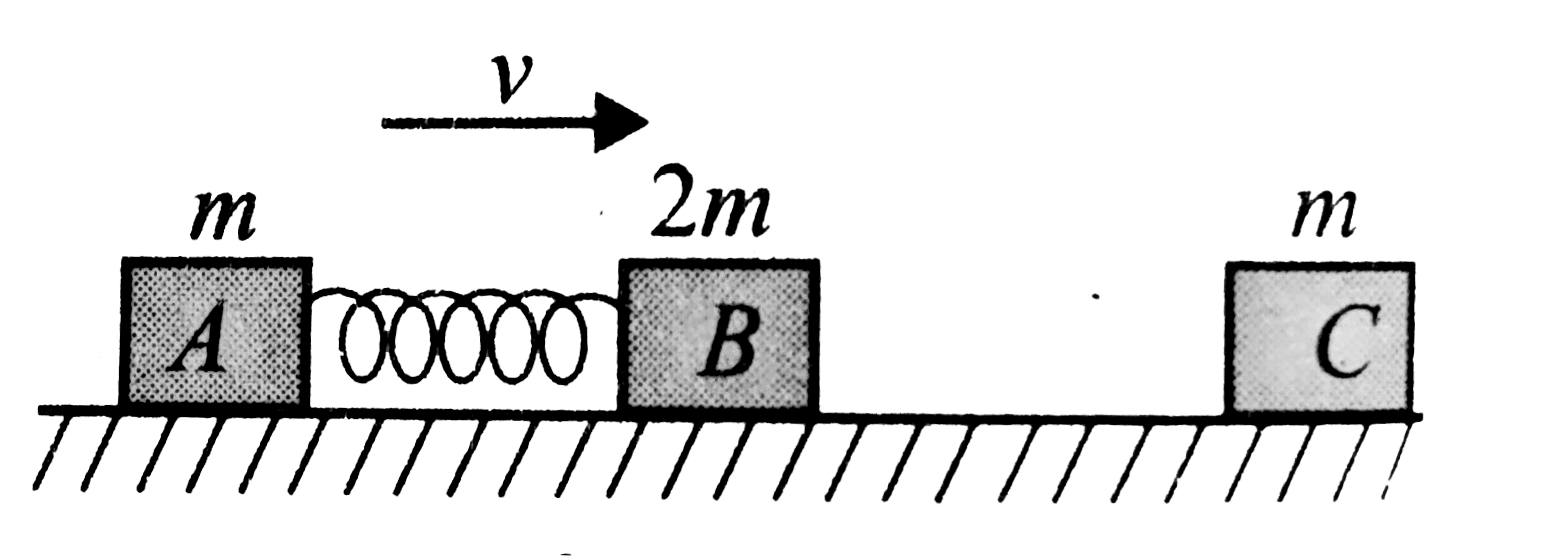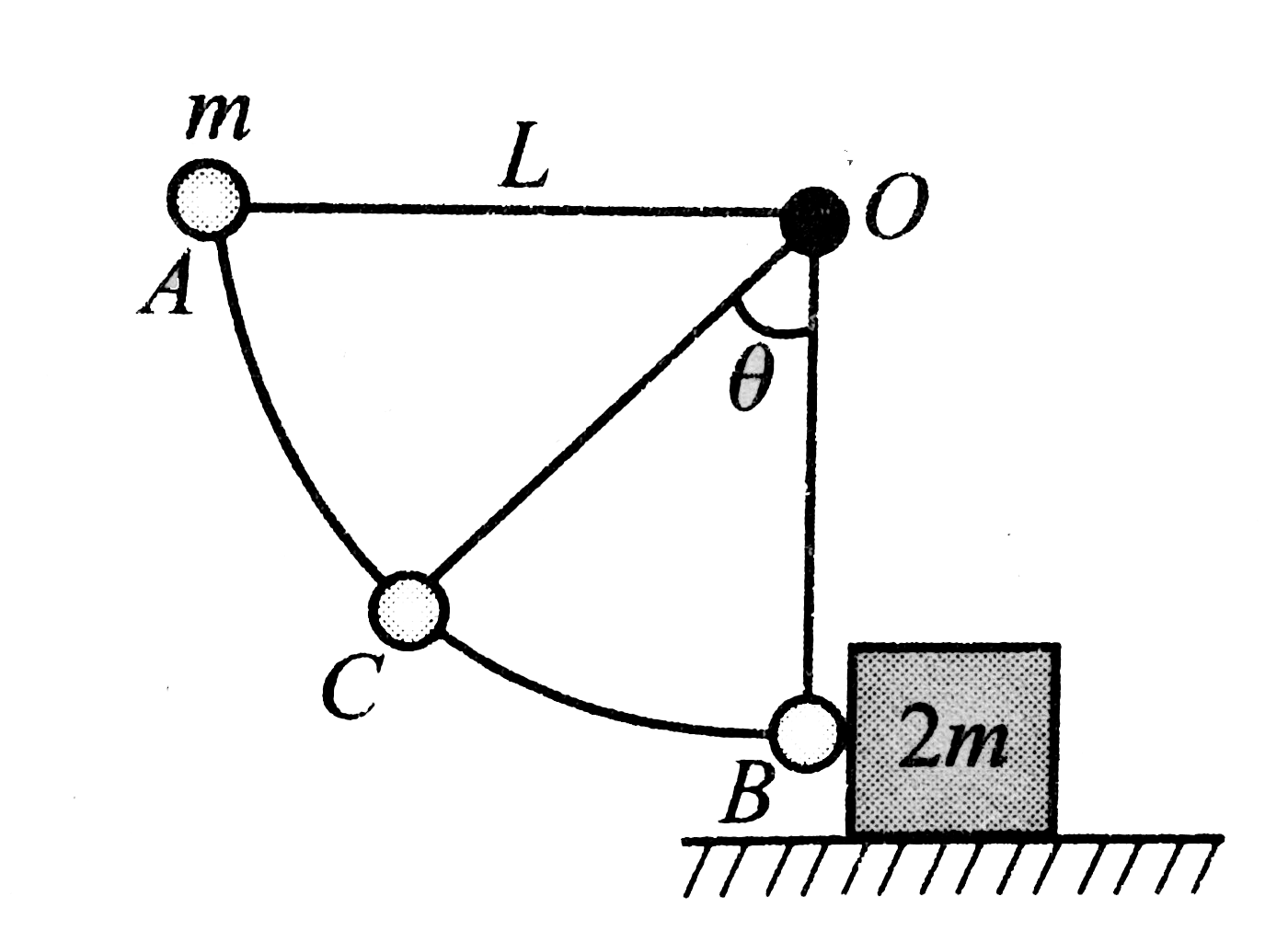In an inelastic collision
the initia kinetic energy is equal to the finl kineitc energy
the final kinetic energy is less than the initial kineitc energy
the kinetic energy remains the constant
the kinetic energy first increases then decreases
The correct Answer is:A
To solve the question regarding inelastic collisions, we can follow these steps:
1. Understanding Inelastic Collisions:
- In an inelastic collision, two bodies collide and do not separate completely after the collision. This means they may stick together or deform.
2. Kinetic Energy Consideration:
- In any collision, the total energy is conserved, but kinetic energy is not conserved in inelastic collisions. Some of the kinetic energy is transformed into other forms of energy, such as potential energy due to deformation.
3. Energy Transformation:
- During the collision, a portion of the initial kinetic energy is converted into deformation potential energy. This means that the kinetic energy after the collision will be less than the kinetic energy before the collision.
4. Comparison of Kinetic Energies:
- Therefore, we can conclude that the initial kinetic energy (before the collision) is greater than the final kinetic energy (after the collision). This is a key characteristic of inelastic collisions.
5. Selecting the Correct Option:
- Given the options provided in the question, we identify that the statement "initial kinetic energy is more than final kinetic energy" corresponds to option B. Hence, option B is the correct answer.
Final Answer:
The correct option is B: "initial kinetic energy is more than final kinetic energy".
---
- In an inelastic collision, two bodies collide and do not separate completely after the collision. This means they may stick together or deform.
- In any collision, the total energy is conserved, but kinetic energy is not conserved in inelastic collisions. Some of the kinetic energy is transformed into other forms of energy, such as potential energy due to deformation.
- During the collision, a portion of the initial kinetic energy is converted into deformation potential energy. This means that the kinetic energy after the collision will be less than the kinetic energy before the collision.
- Therefore, we can conclude that the initial kinetic energy (before the collision) is greater than the final kinetic energy (after the collision). This is a key characteristic of inelastic collisions.
- Given the options provided in the question, we identify that the statement "initial kinetic energy is more than final kinetic energy" corresponds to option B. Hence, option B is the correct answer.
The correct option is B: "initial kinetic energy is more than final kinetic energy".
Topper's Solved these Questions
- BOOK - HC VERMA ENGLISHCHAPTER - CENTRE OF MASS, LINEAR MOMENTUM, COLLISIONEXERCISE - Exercises64videos
CENTRE OF MASS, LINEAR MOMENTUM, COLLISION
- BOOK - HC VERMA ENGLISHCHAPTER - CENTRE OF MASS, LINEAR MOMENTUM, COLLISIONEXERCISE - Question For short Answer25videos
CENTRE OF MASS, LINEAR MOMENTUM, COLLISION
- BOOK - HC VERMA ENGLISHCHAPTER - CENTRE OF MASS, LINEAR MOMENTUM, COLLISIONEXERCISE - worked out Examples23videos
CENTRE OF MASS, LINEAR MOMENTUM, COLLISION
- BOOK - HC VERMA ENGLISHCHAPTER - CALORIMETRYEXERCISE - Short answer9videos
CALORIMETRY
- BOOK - HC VERMA ENGLISHCHAPTER - CIRCULAR MOTIONEXERCISE - Question for short Answer10videos
CIRCULAR MOTION
Similar Questions
Underline the correct alterntaive:
a) when a conservative force does positivie work on a body, the potential energy of the body increase/decreases/remains unaltered.
work done by a body against friction always results in a loss of its kinetic /potential energy.
c) The rate of change of total momentum of a many-particle system is proportional to the external force/ sum of the internal forces on the system.
d) In an inelastic collision of two bodies, the quantities which do not change after the collision are the total kinetic energy/total linear momentum/total enregy of the system of two bodies.View SolutionIn inelastic collision,
View SolutionWhat will be the angle of reflection in case of an inelastic collision and v=?
View SolutionA ball hits a floor and rebounds after an inelastic collision. In this case
View SolutionA He+ ion is at rest and is in ground state. A necutron with intial kinetic energyK collides heads on with the He+ ion. Find minimum value of K so that there can be an inelastic collision between these two particals.
 View Solution
View SolutionAn electron of energy 11.2eV undergoes an inelastic collision with a hydrogen atom in its ground state [Neglect recoiling of atom as mH>>me]. Then is this case
View SolutionAnwer carefully, with reasons:
a) In an elastic collision of two billiard balls, is the total kinetic energy conserved during the short time of collision of the balls (i.e. when they are in contact)?
Is the total linear momentum conserved during the short time of an elastic collision of two balls?
c) What are the answers to a) and b) for an inelastic collision?
d) If the potenital energy of two billiard balls depends only on the separation distance between their centers, is the collision elastic or inelastic? (note we are talking here of potential energy corresponding to the force during collision, not gravitational potential energy).View SolutionTwo blocks A and B of masses in and 2m, respectively, are connected with the help of a spring having spring constant, k as shown in Fig. Initially, both the blocks arc moving with same velocity v on a smooth horizontal plane with the spring in its natural length. During their course of motion, block B makes an inelastic collision with block C of mass m which is initially at rest. The coefficient of restitution for the collision is 1/2. The maximum compression in the spring is
 View Solution
View SolutionA ball of mass m is attached to a cord of length L, pivoted at point O, as shown in Fig. The ball is released from rest at point A, swings down and makes an inelastic collision with a block of mass 2m kept on a rough horizontal floor. The coefficient of restitution of collision is e=2/3 and coefficient of friction between block and surface is After collision, the ball comes momentarily to rest at C when cord makes an angle of θ with the vertical and block moves a distance of 3L/2 on rough horizontal floor before stopping. The values of μ and θ are, respectively,
 View Solution
View SolutionAssertion : A moving ball having an inelastic collison withh another moving ball can have larger kinetic energy after collision.
Reason: During a collision between two bodies, transfer of energy mayh take place from one body to another.View Solution

